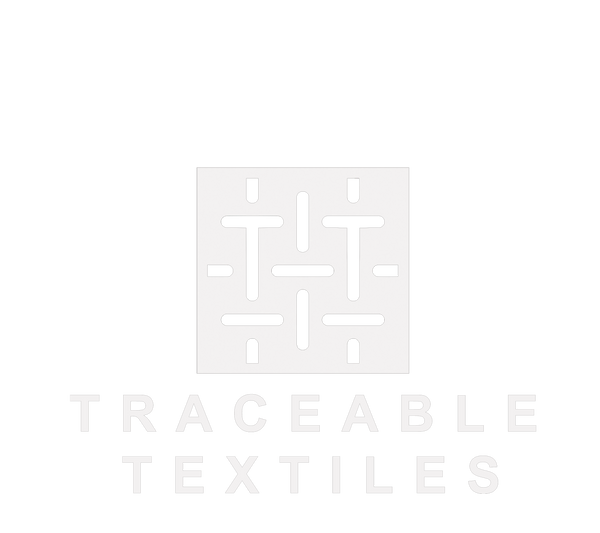Our Process
From Farm to Loom: Crafting Sustainable Traceable Wool Textiles in Edmonton, Alberta
At Traceable Textiles, our journey from raw wool to finished product embodies our commitment to sustainability and community-driven craftsmanship. We start by establishing connections with local farms, where we actively participate in conversations regarding animal-raising and feeding practices to help farmers produce the best quality wool they can.
In the spring, the sheep are ready to be sheared. Once the fleece is off of the sheep, we start skirting. Skirting is a process of sorting the raw fleece, where we remove any wool that is too short, too long, too matted, too brittle or too dirty for the spinning mill. We try to skirt the wool directly on sheering days whenever possible. This hands-on approach allows us to select the best wool, ensuring quality right from the start. When we can't make it to a shearing, we perform the skirting in our studio. We can have upwards of 1,500 lbs of wool skirted at one time, ready to be sent off for spinning. Once the skirting is complete, we weigh the wool and pay the farmers a fair price for what would otherwise be a disposable by-product.
We are always looking for new places to use the wool that is not the best for spinning. This year, we brought a lot of our “dirty” wool to gardens around Edmonton and farms up North to use a mulch. Wool is a great mulch for keeping pests out and moisture in.
As weavers, we understand what blend of different breeds will produce the best wool yarn for blanket production. We are also blending the natural colours of wool into different colourways of black, brown, grey and neutrals, reducing our need to dye as much, thus saving on water.
Our blended fleeces are then brought to Custom Woolen Mills in Southern Alberta to be washed, carded and spun into a woolen yarn. Woolen spun is our choice of spinning style. It provides loft and lightness that gives our blankets their squooshy warmth.
After we receive our spun wool back from the mill, we move into the season of Natural Dyeing. This typically happens in August when the local flowers are blooming and ready to be harvested. Tansy, for example, is an invasive plant here in Edmonton. We choose it for its bright yellow colour, and for its ability to hold color when washed or exposed to light. We also dye with Coreopsis and Marigolds; both of these being grown and harvested from our gardens. They too, are colour and lightfast and create a beautiful, deep orange. The indigo we use is sourced from a social enterprise in Bangladesh whose goal is to help alleviate poverty through artisan training and small-scale farmer production of indigo.
The dyed yarn is then carefully used to add distinctive accents to our blanket designs. The weaving process is meticulously handled by Shannon and Kylie; involving warping, loom dressing, and weaving, transforming the yarn into beautiful, functional textiles.
Meanwhile, our photographer Barb captures the behind-the-scenes magic, managing our social media presence, updating our website, and providing stunning images and footage that tell the story of our products from inception to completion.
After the textiles are woven, they undergo a rigorous finishing process. This includes clipping loose ends, fixing any errors, and tying the knots for the fringe. The blanket is not truly completed until it is machine washed and dried, felted with our logo, and then pressed. We then clip any loose ends and trim the fringe.
Finally, the finished woolens are ready to be photographed and uploaded to our website, making these beautifully crafted pieces available to our customers.
Every step in our process not only reflects our dedication to craftsmanship but also our commitment to the environment and our local community, creating 100% Albertan wool traceable textiles that customers can feel good about both aesthetically and ethically.

Shearing day - Mitchell's farm

Expert hands carefully shearing - Mitchell's farm

Flock of Île-de-France sheep - Farm near Entwisetle Alberta

Shannon and Kylie skirting - Mitchell's farm

Raw fleece with a nice length for spinning and a good crimp

Custom Woolen Mill's Mule spinner - Carstairs Alberta

Freshly harvested Tansy flowers for dye baths

Kaitlyn's dye journal

Skein of Tansy over dye with Indigo

The multiple shades of our natural dyeing processes

Preparing a new warp

Tying a new warp onto the loom

Shannon weaving one of our blankets

The original Traceable Textiles Parkland blanket design

Kylie's skilled hands finishing a blanket

Finished blankets after many months of hard work
